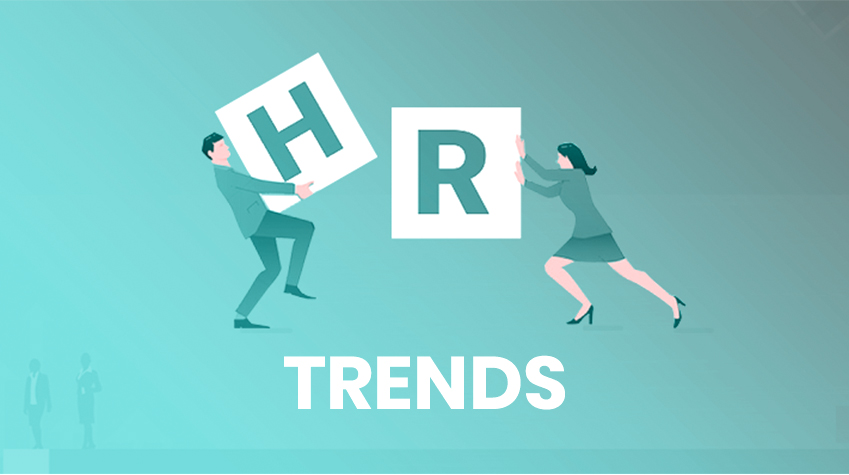
Trend analysis in Human Resources (HR) is a crucial process used to understand past patterns and predict future trends in various HR metrics. This analysis helps organizations in strategic planning, decision-making, and preparing for future challenges and opportunities in workforce management. Here’s a detailed guide on how to conduct trend analysis HR.
Explaining the Steps of Trend Analysis for HR
Step 1: Identify the Key HR Metrics
The first step in trend analysis is identifying the HR metrics that are crucial for your organization. These can vary depending on your business goals, industry, and workforce dynamics. Common HR metrics include:
Employee Turnover Rates: Measures the rate at which employees leave the organization.
Absenteeism Rates: Tracks the frequency of unscheduled absences.
Employee Engagement Levels: Assesses how engaged and motivated employees are at work.
Time-to-Hire: The average time it takes to fill a vacancy.
Training and Development: Measures the effectiveness and impact of training programs.
Cost Per Hire: The total cost associated with recruiting a new employee.
Step 2: Collect Relevant Data
Once you’ve identified the metrics, the next step is data collection. Gather historical data for each metric for a meaningful period – typically a few years – to identify top hr trends and patterns.
Use HRIS (Human Resource Information System): Leverage HRIS to collect and manage your data effectively.
Ensure Data Accuracy: Verify the accuracy of the data to ensure reliable analysis.
Consider External Data: Sometimes, it’s beneficial to include industry-wide data to understand how your organization compares with the market.
Step 3: Analyze the Data
With the data in hand, proceed to analyze it to identify any noticeable trends, patterns, or anomalies. This could involve various statistical techniques depending on the complexity of the data.
Create Visual Representations: Use graphs and charts for a clear visual representation of top hr trends 2023.
Look for Patterns: Identify any recurring patterns or significant changes over time.
Consider Seasonal Variations: Account for seasonal impacts on certain metrics (like increased sales during the holiday season leading to higher workload and overtime).
Step 4: Identify Causal Factors
Understanding the reasons behind certain trends is as important as identifying the trends themselves.
Internal Factors: Consider internal changes such as policy adjustments, leadership changes, or new initiatives that might have influenced the top hr trends.
External Factors: Analyze external factors like economic shifts, technological advancements, or industry trends that could impact HR metrics.
Step 5: Make Predictions for the Future
Use the insights gained from past trends to make informed predictions about future HR challenges and needs.
Apply Predictive Models: Use statistical models to make predictions about future trends based on historical data.
Scenario Analysis: Consider different scenarios and how they might impact your HR managers.
Step 6: Develop Strategies
Based on your analysis and predictions, develop strategies to address anticipated challenges and capitalize on potential opportunities.
Address Negative Trends: Create action plans to tackle any negative trends, such as increasing employee turnover.
Leverage Positive Trends: Find ways to continue or enhance positive top hr trends, like high employee engagement.
Step 7: Implement Changes
Implement the strategies developed in the previous step, ensuring that they align with the overall business objectives.
Stakeholder Buy-In: Get buy-in from key stakeholders before implementing changes.
Change Management: Manage the implementation process effectively, ensuring a smooth transition and minimal disruption.
Step 8: Monitor and Adjust
Post-implementation, continuously monitor the metrics to assess the impact of the changes. Be prepared to make adjustments as necessary.
Regular Monitoring: Regularly track the metrics to see the effects of the implemented strategies.
Flexibility to Adapt: Be ready to make adjustments to your strategies based on the ongoing monitoring and changing business environment.
Step 9: Reporting and Communication
Effectively communicate the findings, predictions, and strategies to relevant stakeholders. This transparency helps in aligning HR strategies with business goals.
Create Comprehensive Reports: Prepare detailed reports summarizing the findings, predictions, and recommended strategies.
Effective Communication: Use clear and effective communication channels to disseminate the information to all relevant parties.
Conclusion
Trend analysis HR is a dynamic and ongoing process. It requires a consistent approach to data collection, analysis, and strategy implementation. By understanding past trends and predicting future ones, HR professionals can proactively manage workforce challenges, align HR strategies with business objectives, and contribute significantly to the organization’s success. Know how HR technology software is transforming HR functions. Explore trends for 2023 and learn about best practices for digital transformation.


